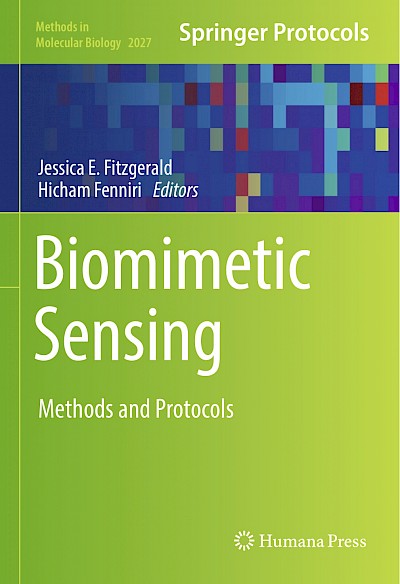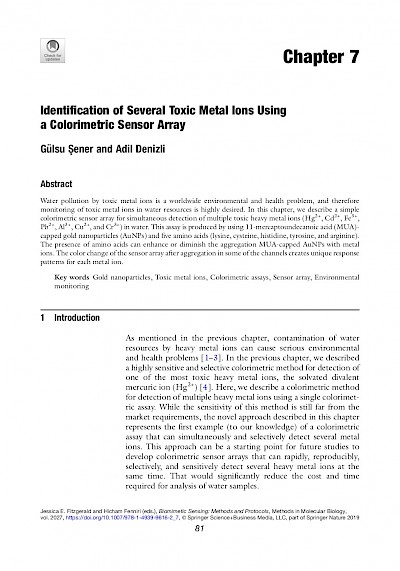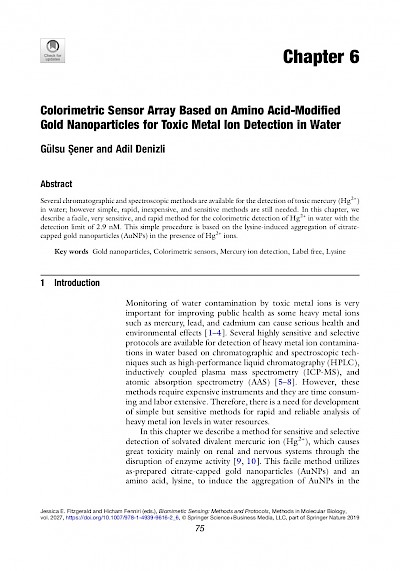Two Chapters Published in Biomimetic Sensing: Methods and Protocols
"Colorimetric Sensor Array Based on Amino Acid-Modified Gold Nanoparticles for Toxic Metal Ion Detection in Water" and "Identification of Several Toxic Metal Ions Using a Colorimetric Sensor Array"
Chapter 6
Colorimetric Sensor Array Based on Amino Acid-Modified Gold Nanoparticles for Toxic Metal Ion Detection in Water
Several chromatographic and spectroscopic methods are available for the detection of toxic mercury (Hg2+) in water; however simple, rapid, inexpensive, and sensitive methods are still needed. In this chapter, we describe a facile, very sensitive, and rapid method for the colorimetric detection of Hg2+ in water with the detection limit of 2.9 nM. This simple procedure is based on the lysine-induced aggregation of citrate- capped gold nanoparticles (AuNPs) in the presence of Hg2+ ions.
Chapter 7
Identification of Several Toxic Metal Ions Using a Colorimetric Sensor Array
Water pollution by toxic metal ions is a worldwide environmental and health problem, and therefore monitoring of toxic metal ions in water resources is highly desired. In this chapter, we describe a simple colorimetric sensor array for simultaneous detection of multiple toxic heavy metal ions (Hg2+, Cd2+, Fe3+, Pb2+, Al3+, Cu2+, and Cr3+) in water. This assay is produced by using 11-mercaptoundecanoic acid (MUA)- capped gold nanoparticles (AuNPs) and five amino acids (lysine, cysteine, histidine, tyrosine, and arginine). The presence of amino acids can enhance or diminish the aggregation MUA-capped AuNPs with metal ions. The color change of the sensor array after aggregation in some of the channels creates unique response patterns for each metal ion.


